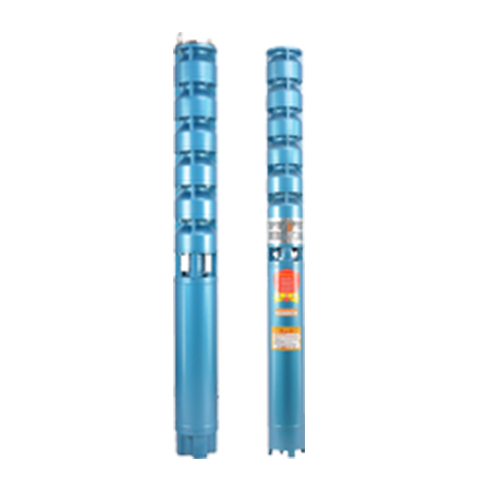Aug . 27, 2024 19:33 Back to list
How to Set Up a Submersible Pump
How to Set Up a Submersible Pump
Submersible pumps are essential tools for a variety of applications, including sump drainage, groundwater extraction, and irrigation. Setting up a submersible pump correctly ensures efficient operation and longevity. Here’s a step-by-step guide on how to set up a submersible pump effectively.
Step 1 Gather Your Materials
Before starting, ensure you have all necessary materials on hand. This may include the submersible pump, hose or piping, electrical cable, a discharge hose, and tools for assembly like wrenches and pliers. Additionally, safety gear such as gloves and goggles is recommended.
Step 2 Choose the Right Location
The location for your submersible pump is crucial. Identify a spot below the water level in a well, pond, or sump pit. Ensure the area is free from debris and excess sediment that could clog the pump. The pump should be positioned on a stable base to avoid tipping.
Step 3 Prepare the Pump
Before submerging the pump, inspect it for any visible damage. Check the impeller and ensure the intake is clear. If your pump requires assembly, follow the manufacturer’s instructions carefully to attach any necessary fittings or hoses.
Step 4 Connect the Discharge Hose
how to set up submersible pump

Attach the discharge hose securely to the pump’s outlet. Make sure that any clamps or fittings are tightened properly to prevent leaks. If you will be using multiple hoses or need to extend the distance, use quality connectors.
Step 5 Position the Pump
Lower the submersible pump into the water gently. Ensure that it is fully submerged, but not resting on the bottom, as this can cause damage or sediment intake issues. It should hang freely to allow for unrestricted water flow.
Step 6 Connect the Power Supply
After positioning the pump, connect it to the power source. Make sure that you use an electrical outlet that is properly grounded and suitable for the voltage rating of your pump. If the pump has a pressure switch, install it according to the manufacturer’s guidelines.
Step 7 Test the Pump
Once everything is connected, turn on the pump to test its operation. Check for any leaks in the connections and listen for unusual noises, which might indicate a problem. Allow the pump to run for a short period to ensure it operates smoothly.
Conclusion
Setting up a submersible pump requires careful preparation and attention to detail. By following these steps, you can ensure that your pump works efficiently and effectively for your specific needs. Regular maintenance checks will help prolong the life of your pump and maintain optimal performance. Always refer to the manufacturer’s manual for specific instructions and safety precautions tailored to your model.
-
Submersible Water Pump: The Efficient 'Power Pioneer' of the Underwater World
NewsJul.01,2025
-
Submersible Pond Pump: The Hidden Guardian of Water Landscape Ecology
NewsJul.01,2025
-
Stainless Well Pump: A Reliable and Durable Pumping Main Force
NewsJul.01,2025
-
Stainless Steel Submersible Pump: An Efficient and Versatile Tool for Underwater Operations
NewsJul.01,2025
-
Deep Well Submersible Pump: An Efficient 'Sucker' of Groundwater Sources
NewsJul.01,2025
-
Deep Water Well Pump: An Efficient 'Sucker' of Groundwater Sources
NewsJul.01,2025
-
 Submersible Water Pump: The Efficient 'Power Pioneer' of the Underwater WorldIn the field of hydraulic equipment, the Submersible Water Pump has become the core equipment for underwater operations and water resource transportation due to its unique design and excellent performance.Detail
Submersible Water Pump: The Efficient 'Power Pioneer' of the Underwater WorldIn the field of hydraulic equipment, the Submersible Water Pump has become the core equipment for underwater operations and water resource transportation due to its unique design and excellent performance.Detail -
 Submersible Pond Pump: The Hidden Guardian of Water Landscape EcologyIn courtyard landscapes, ecological ponds, and even small-scale water conservancy projects, there is a silent yet indispensable equipment - the Submersible Pond Pump.Detail
Submersible Pond Pump: The Hidden Guardian of Water Landscape EcologyIn courtyard landscapes, ecological ponds, and even small-scale water conservancy projects, there is a silent yet indispensable equipment - the Submersible Pond Pump.Detail -
 Stainless Well Pump: A Reliable and Durable Pumping Main ForceIn the field of water resource transportation, Stainless Well Pump has become the core equipment for various pumping scenarios with its excellent performance and reliable quality.Detail
Stainless Well Pump: A Reliable and Durable Pumping Main ForceIn the field of water resource transportation, Stainless Well Pump has become the core equipment for various pumping scenarios with its excellent performance and reliable quality.Detail
